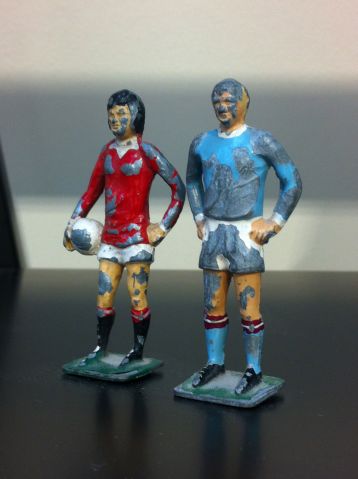Today I focused on getting work ready for a member’s show at a local gallery, as well as working towards the deadline for an open call – the shed roof repair will just have to wait. The weather forecast is also predicting some rain free, warmer days coming up – and dare I say it, even some sunshine – and so, waiting a few days seems like a good idea.
In the meantime, I’m gathering together the stuff I’m happy to let go of and preparing it for a stall I’m sharing with a friend at a local vintage sale on Saturday. The mantra throughout the recent sorting has been very much about, do I need it for my art, or do I want it in my house? If the answer’s no, then it goes. The vintage fair on Saturday will be fun. I’ll try not to come back laden with new stuff, though if there’s something I can’t resist, why not! – all part of the ongoing (never-ending?) sifting and sorting process. Who knows if anyone will be interested in my cast offs, but it would be nice to raise at least a little bit towards the cost of the shed roof repair. We’ll see …
Meanwhile, the sorted and catalogued boxes now reaches the sum of 103. They fit comfortably in the garden shed and once it’s all watertight, I hopefully won’t need to think about them too often – or at least, not until I want to access any of them. This will put me in a good place as far as being able to focus and concentrate on new work, I think – at least, that’s my hope. It’s something I’ve wanted for a long time – storage in one place, with a separate working space in which to focus on a specific project. Historically, my studio spaces have been full of distractions – too much stuff, cramming and dominating the area. I’m hoping that, through finally getting my raw materials stored, out of sight and yet, thoroughly recorded, I’ll be able to turn my full attention to the work at hand.
I’ve chosen a few random boxes with their contents from the list of 103 boxes as an example of just how diverse and varied the items can be. Somehow, they all feel worthy of being kept – at least for now. It will be interesting to look at the list again in a year or two, to see how I feel about them then.
For now, it’s back to sorting for another purpose – ie. the stuff that’s destined to go. This morning, while starting to think about putting prices on things, I was reminded once again about issues around value and worth. It’s an ongoing thread through my creative work and reminiscent of the questions I asked of 10×10 participants: ‘What is an object worth to you? How much do you want it and how much are you prepared to give in return?’
Those questions will only make sense if you’re familiar with my 10×10 project. If you’re not and you’re interested, you can read more about it here:
http://www.katemurdochartist.com/10×10.html
Box 5
Inside vintage chocolate box:
A woman’s worth poem – ‘but the woman worth while …’
Senior Service tin with bits & pieces inside
Coloured glass
x2 vintage glass lampshades
Floral tin with embroidery threads
Vintage tin with men’s faces (some vintage cars inside)
x2 miniature ceramic girls holding flowers
Vintage tin – ice skater with a couple of things inside
Very cute ceramic girl playing piano – musical
Vintage tin of young girl in fur mittens & hat
Ceramic QE pomander
Box 23
Plastic:
Trays & plastic placemats
Wedding horseshoe
Xmas tree (miniature)
Orange vintage plastic pot with lid
Orange plastic chrysantheum
Hair rollers
Blonde action man
Miniature plastic domes
White plastic jelly mould
Round pink ’60s mirror
Brown plastic mirror
x1 fabric covered coat hanger
Egg timer
Carnations in glass holder
Swan with plastic flowers
Box 39
White feathers in box
Small jar of plastic dogs
St Leonard’s wooden box with shells for phone money
Mills & Boon books
Bath cubes – skaters on a pond (Victorian)
String dispenser (white ceramic rabbit’s head)
Victorian woman with string in mouth in oak 30s frame
x2 1980s Friendship books by Francis Gay
Gold framed glass box with silver small letters
2 packs of vintage playing cards – Donkey & Old Maid
Small silver spoon
Tomatoe sandwich signpost
Vintage fuzzy felt florist shop
Black purse
I black plastic rifle (small ‘toy’ size)
Typhoo tea cards – costume
x5 Radio Modeller magazines with women on covers
London graffitti book (80s – mainly politics)
Ballroom dancing tie on plastic beige & brown tie rack
Ceramic flowers
Home Sweet Home pot with purple flowers
x2 Friendship vases (one a Welsh souvenir)
My Love horse shot glass (1948)
Small yellow rose vase
Fergie & Andrew mug
Ceramic boy violonist
Small cash box with ballroom dancing medals, x35 tiny plastic wishbones
1970s green ceramic elephant (with chipped ear)
Small novelty ceramics:
Miniature chamber pot with an eye in the bottom
Small boob cup with German message – schmuser (?)








